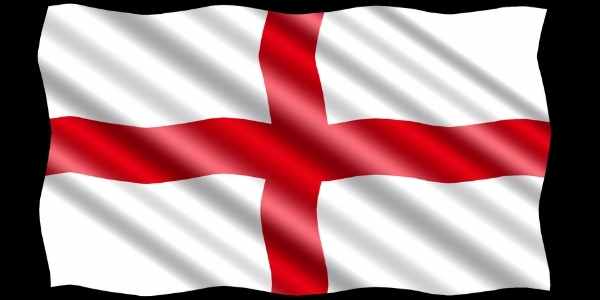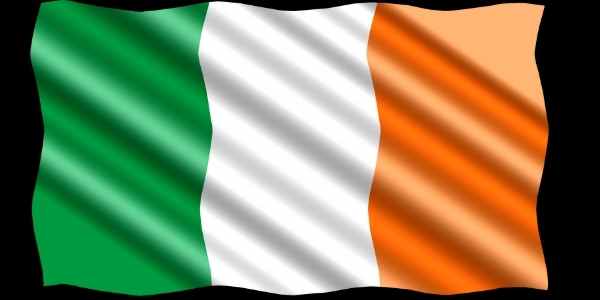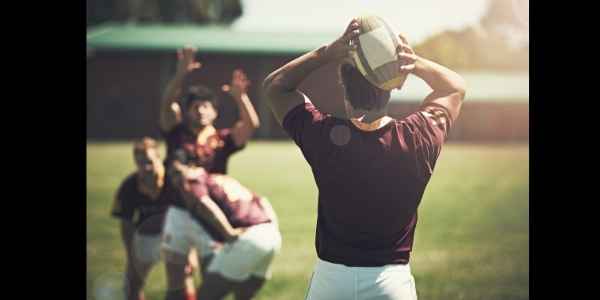Here is our selection of the world’s greatest hookers that we’ve seen on a rugby pitch.
This article runs through their most memorable achievements and why they’ve made our cut.
We’ll work our way up the ladder to the hooker we consider to be the best of several great players.
If you’re wondering why legends like Bryn Meredith and Bobby Windsor aren’t in our list, we’re just a bit too young to have seem them play.

Number #5: Raphael Ibanez (France)
Raphael Ibanez was the son of a club hooker in Dax in the Basques region. He got his first French cap at the age of twenty-three.
A natural leader, Ibanez was made captain of France just two caps later. He led Les Bleus to a Grand Slam in the following year and was a key part of a repeat slam in 1998.
France’s rich vein of form continued with Ibanez at the fore as they reached the final of the 1999 World Cup. Eight years later, Ibanez was captain for France’s 2007 world cup campaign. By that time, he’d moved across the English Channel to join Wasps.
He became a legend at the English club from his first season when he joined Phil Vickery in the front row. When Wasps made the Heineken Cup final against Leicester Tigers, the skill of Ibanez as a hooker was to the fore.
Wasps scored two tries off brilliant short lineout moves. Ibanez himself scored the first one with a dive in the corner.
Ibanez had retired from international rugby after the 2003 World Cup, but Bernard Laporte persuaded him to come back. The hooker’s final stint at test level saw him retire finally in 2008 with ninety-eight caps.
Number #4: Mario Ledesma (Argentina)

Mario Ledesma played in the back row as a young player in Buenos Aires. His coaches switched him to hooker, and he went on to become one of the modern greats. His career spanned an astonishing four World Cups.
Ledesma was one of the leaders for the Pumas. He was a key part in the 2007 World Cup team that swept past France, Scotland, and Ireland to reach the semi-finals and ultimately finish third in the competition.
Ledesma was a noted scrummager but was also highly effective when rampaging in open play.
At club level, he played in France for Clermont Auvergne. He was a key part of the club reaching three consecutive Top 14 finals. They finally won the holy grail of the Top 14 in 2010.
Number #3: Brian Moore (England)

Brian Moore was older than the other players on this list when he was capped for England in 1987 at the age of twenty-five.
That was more normal for front-row players who tended to mature as players later than other positions.
Moore was known as “pitbull”. This sums up how both his teammates and the opposition saw him. He was a feared competitor who hated losing.
Lions tours
Moore had two years of international rugby behind him when he was selected for the Lions tour to Australia in 1989. He was considered to be the reserve choice.
By the time the tests came around, he cemented his place on the starting line-up.
The Lions lost the first match but went on to win the series. Moore’s pitbull-ish attitude was to the fore.
When he was preparing for a throw in the second test, an Aussie fan threw a can of beer at him.
Moore picked it up, opened the tab, and raised the can to toast the crowd. Then he chugged the beer and threw the can back.
After the Lions won the third test, Moore knocked back a bottle of red wine at the post-match dinner. An Aussie sitting near him was lagging behind.
So, Moore relieved him of his bottle and downed that for good measure. He was later found running across Sydney Harbour Bridge doing an airplane impression (yes, arms out wide).
Moore also toured 1993 to New Zealand where the Lions lost the series by 2-1.
But before that, he played in a World Cup final.
Moore and England

The English front row went to the 1991 World Cup with a burgeoning reputation as a destructive unit.
Moore’s Quin teammate, Jason Leonard, is on our list of the best loosehead props of the modern era. Jeff Probyn was the blindside prop.
But England came up short against Australia in the final.
Brian Moore was so disgusted with losing that he chucked his runner-up medal into the Thames.
I doubt he was impressed with winning the vote for Rugby Player Of The Year!
Despite that disappointment, that England team was still outstanding. Moore was an integral part of the team that won further Grand Slams in 1992 and 1995.
He also played in two more World Cups.
Moore and Commentary
For decades, Moore was one of the main commentators on the BBC. His scathing disappointment when England didn’t do what he thought they should was legendary.
We put together some of the best clips here. You can’t see him, but I’m sure he’s banging his fist on the table.
Number #2: Keith Wood (Ireland)

Keith Wood was usually the standout player in a weaker national team than Sean Fitzpatrick’s All Blacks.
Ireland was not a dominant team when Wood was playing from 1994 to 2003.
Like Fitzpatrick, Wood’s father was an outstanding international prop for Ireland and the Lions.
Gordon Wood picked up 29 caps when there were fewer international matches on offer. Wood Senior, unfortunately, died young. Keith was only ten years old when his father passed.
Keith Wood was capped for Ireland at twenty-one and went on to captain Ireland in 38 of his 58 tests.
He was a fierce competitor and could drag his country to occasional narrow wins against teams with superior firepower at that time.
Key skills

Wood wasn’t as excellent a lineout thrower as Sean Fitzpatrick. But he changed the way hookers play the game with how he played outside the set-piece.
He ran with the ball, he took and gave passes, he tackled, and he rucked hard.
Before Wood became known for his rampaging runs around the field, hookers basically threw, scrummaged, mauled, and took a rest.
Wood was basically a bigger and more threatening version of a flanker. The rest of the rugby world took notice of his exploits with the British & Irish Lions.
Wood and the Lions of 1997
When Wood went on the Lions tour of 1997 to South Africa, he had experienced seven losses in nine games with Ireland.
The Springboks were the world champions and heavy favorites. They were perhaps complacent when the Lions beat them in the first test.
The Springbok front row included our pick for the greatest loosehead prop. They shunted the Lions backward in the first few scrums of the first test.
But Wood, his fellow Irishman Paul Wallace, and Scot Tom Smith steadied the ship. And Keith Wood was everywhere else on the field in an outstanding performance.

The Lions won the first test but were losing the second in a bruising encounter that went down to the wire. The score was level in the dying minutes.
Wood picked up the ball from the back of a ruck, hacked it downfield, and charged after it. He ran past turning Springboks to force the last man to kick the ball out of play. That epitomized how Wood played the game.
Here’s a clip of those last minutes.
From the lineout, Wood joins the maul to drive the pack forward. The Lions set up a ruck near the line.
Wood engaged in a spot of old-fashioned rucking to secure the ball (perfectly legal then, although wouldn’t be allowed now). And Guscott drops the winning goal!
Number #1: Sean Fitzpatrick (New Zealand)
We debated for hours over who was #1 and #2 on our list between Fitzpatrick and Keith Wood. Both were phenomenal players and captains.
We gave the nod to Sean Fitzpatrick because he just about shaded Wood in our eyes with his technical skills.
Fitzpatrick was born to play rugby. His father, Brian, was also an All Black. He picked up his first cap in 1986. He was made captain in 1992 and remained so until he stepped down in 1997.
Fitzpatrick wasn’t expected to feature much in the World Cup of 1987, as the All Blacks starting hooker was nailed on. But the excellent Andy Dalton got injured and Fitzpatrick stepped up.
The young hooker was phenomenal as the All Blacks won the tournament.

Leadership against Lions
Fitzpatrick was part of a dominant pack in the 1991 World Cup. But the All Blacks were beaten in the semi-final by a superior Australian backline.
Fitzpatrick was given the captaincy the following year. His role was clearly to make the All Blacks top dogs once again.
His first big task was in 1993 when the British & Irish Lions toured New Zealand.
The Lions lost narrowly in the first test but won the second. The middle test was lit up by a counter-attack and a fifty-meter run down the wing by Rory Underwood. Underwood is our pick for the greatest England winger of all time.
This match left the series tied. Everything was on the line for the third Test and the Lions had the momentum. The All Blacks were under intense pressure, given their exit from the World Cup.
But Fitzpatrick rallied his troops. He led the All Blacks to a decisive win of 30 points to 13.

Downs and Ups
Fitzpatrick’s All Blacks had further ups and downs before the 1995 World Cup rolled around.
Jonah Lomu lit up that tournament, but the Springboks shackled the great wing in the final and lifted the trophy.
The following year, Fitzpatrick led the All Blacks to South Africa and won a famous touring series. That was the first time that ABs had won a series in South Africa!
Key skills
Aside from his captaincy and leadership, we’ve picked Fitzy as the best hooker due to his outstanding technical skills.
It didn’t start out that way. A senior Auckland teammate was annoyed by the quality of the young Fitzpatrick’s throwing and gave him a lambasting.
Fitzpatrick took it to heart and spent months working on his technique. That drive to improve remained with the player throughout his career.
There’s no doubt that he was a better lineout thrower than Irishman Keith Wood. Both hookers were outstanding technical scrummagers and had excellent skills rucking over the ball.
Fitzpatrick also picked up 12 tries in 55 tests by his sharp nose near the try line. Keith Wood used his speed to charge over the line from a distance. Fitzpatrick knew when to take a wide position and take the final pass after the rest of the pack had hammered at the line.
So, we’ve rated Fitzpatrick as the greatest hooker. He’s not the only New Zealander to be the best player in the world in his position. Check out our article on the greatest All Blacks to see where he fares amongst his countrymen.
Video Highlights
Watch clips and highlights in our video roundup: